Refine search
Actions for selected content:
103 results

Gerald Gardner and the Creation of Wicca
-
- Published online:
- 10 October 2025
- Print publication:
- 30 October 2025
-
- Element
-
- You have access
- HTML
- Export citation
Chapter 9 - Alternative Realisms
-
-
- Book:
- The Cambridge Companion to British Postmodern Fiction
- Published online:
- 07 August 2025
- Print publication:
- 21 August 2025, pp 144-158
-
- Chapter
- Export citation
Does an Arrow a Day Keep Satan Away? Late Antique Magical Subtexts in Babylonian Rabbinic Narratives
-
- Journal:
- Harvard Theological Review / Volume 118 / Issue 3 / July 2025
- Published online by Cambridge University Press:
- 22 October 2025, pp. 552-577
- Print publication:
- July 2025
-
- Article
-
- You have access
- Open access
- HTML
- Export citation
Introduction
-
- Book:
- The Women Who Threw Corn
- Published online:
- 28 May 2025
- Print publication:
- 26 June 2025, pp 1-28
-
- Chapter
- Export citation
1 - Demonological and Anti-sorcery Theories in Spain
- from Part I - Witches and Their Enemies in the Early Modern World
-
- Book:
- The Women Who Threw Corn
- Published online:
- 28 May 2025
- Print publication:
- 26 June 2025, pp 31-54
-
- Chapter
- Export citation

Natural and Supernatural in Early Medieval England
-
- Published online:
- 29 May 2025
- Print publication:
- 29 May 2025
-
- Element
- Export citation
2 - Attention in Everyday Life
-
- Book:
- Neuroscience of Attention
- Published online:
- 02 May 2025
- Print publication:
- 22 May 2025, pp 32-57
-
- Chapter
- Export citation
Chapter 4 - Blessing and Protection
-
- Book:
- Protestant Bodies
- Published online:
- 20 February 2025
- Print publication:
- 27 February 2025, pp 162-216
-
- Chapter
- Export citation
The sacred gun: the religious and magical elements of America's gun culture
-
- Journal:
- Politics and Religion / Volume 18 / Issue 1 / March 2025
- Published online by Cambridge University Press:
- 27 February 2025, pp. 22-49
-
- Article
-
- You have access
- Open access
- HTML
- Export citation
2 - An Enlightened Civil Society?
- from I - 1750–1819: The Ends of the Ancien Régime
-
- Book:
- Modern Britain, 1750 to the Present
- Published online:
- 14 January 2025
- Print publication:
- 30 January 2025, pp 40-74
-
- Chapter
- Export citation
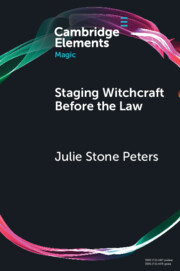
Staging Witchcraft Before the Law
- Skepticism, Performance as Proof, and Law as Magic in Early Modern Witch Trials
-
- Published online:
- 06 December 2024
- Print publication:
- 09 January 2025
-
- Element
-
- You have access
- Open access
- HTML
- Export citation
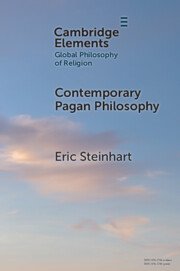
Contemporary Pagan Philosophy
-
- Published online:
- 06 December 2024
- Print publication:
- 02 January 2025
-
- Element
- Export citation
6 - Military Historians
-
- Book:
- Hiroshima and the Historians
- Published online:
- 30 May 2024
- Print publication:
- 06 June 2024, pp 155-182
-
- Chapter
- Export citation
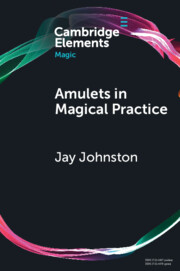
Amulets in Magical Practice
-
- Published online:
- 28 March 2024
- Print publication:
- 25 April 2024
-
- Element
- Export citation
Chapter 2 - All Sides of the Moon
-
-
- Book:
- The Names of the Gods in Ancient Mediterranean Religions
- Published online:
- 23 February 2024
- Print publication:
- 07 March 2024, pp 37-58
-
- Chapter
- Export citation
6 - Landscape and Material Culture
- from Part I - Contexts
-
-
- Book:
- The Cambridge History of Old Norse-Icelandic Literature
- Published online:
- 08 February 2024
- Print publication:
- 29 February 2024, pp 111-132
-
- Chapter
- Export citation
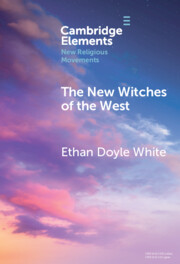
The New Witches of the West
- Tradition, Liberation, and Power
-
- Published online:
- 02 February 2024
- Print publication:
- 22 February 2024
-
- Element
- Export citation
HELLENISTIC POETRY, MAGICAL GEMS AND ‘THE SWORD OF DARDANUS’ IN APULEIUS’ CUPID AND PSYCHE
-
- Journal:
- The Classical Quarterly / Volume 73 / Issue 2 / December 2023
- Published online by Cambridge University Press:
- 01 February 2024, pp. 845-861
- Print publication:
- December 2023
-
- Article
-
- You have access
- Open access
- HTML
- Export citation
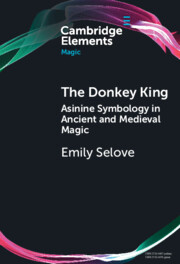
The Donkey King
- Asinine Symbology in Ancient and Medieval Magic
-
- Published online:
- 24 November 2023
- Print publication:
- 21 December 2023
-
- Element
- Export citation
Psychotic and autistic traits among magicians and their relationship with creative beliefs
-
- Journal:
- BJPsych Open / Volume 9 / Issue 6 / November 2023
- Published online by Cambridge University Press:
- 15 November 2023, e214
-
- Article
-
- You have access
- Open access
- HTML
- Export citation
